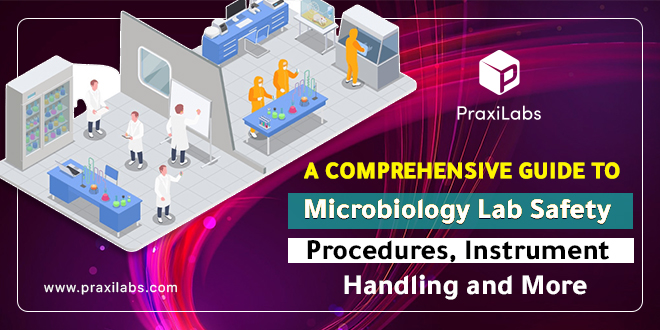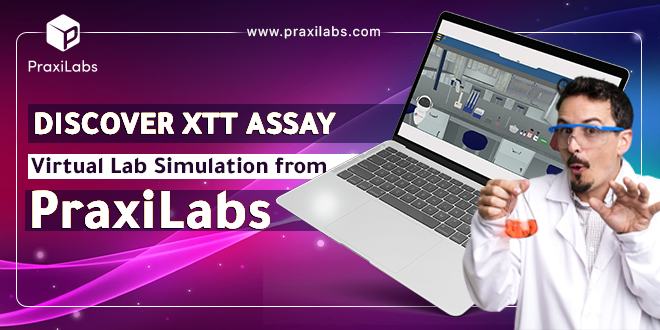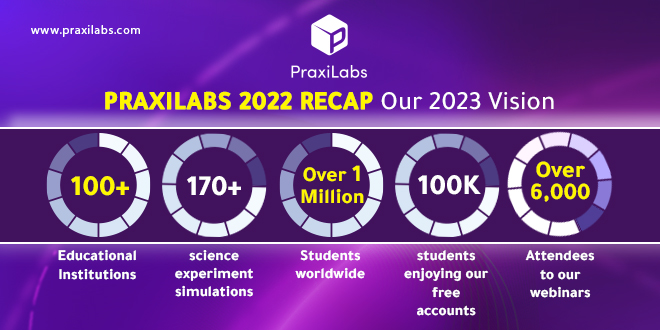-
News

Breaking News | Dr. Khadija El-Bedweihy Winning the 2023 Cartier Women’s Initiative, Regional Award for Middle East & North Africa
Last Updated on May 22, 2023 by Nourhan Essam We are beyond excited to announce that Khadija ElBedweihy, CEO & Founder of PraxiLabs, has been awarded First Place in the 2023 Cartier Women’s Initiative, Regional Awards for Middle East and North Africa which was held in Paris on May 10 at Salle Pleyel. Khadija is among the 11 women entrepreneurs from around the world who won the Cartier Women’s Initiative (CWI) program for creating startups businesses that have environmental and social impact and serve as catalysts for change and growth within their communities and the larger society. The Cartier Women’s Initiative is an annual international entrepreneurship program that aims to drive change by empowering women impact entrepreneurs. Founded by Cartier in 2006, the program is open to women-run and women-owned businesses from any country and sector that aim to have a strong and sustainable social and/or environmental impact. Fifteen years on, the Cartier Women’s Initiative has recognized and supported 262 women across the globe who are tackling an extraordinary range of challenges. The community spans 62 countries and includes sectors as diverse as pharmaceuticals, e-learning, and agriculture. These women entrepreneurs have embraced a bold mindset to grow their businesses. Many …
Read More » -
virtual learning articles

AI Is Transforming Education | Role of Artificial Intelligence in Virtual Labs
Last Updated on April 19, 2023 by Nourhan Essam Artificial intelligence (AI) is no longer just a concept in sci-fi films — it’s here, and we are already using AI in our everyday lives. AI is seriously changing the way we live. From smart home devices to self-driving robots, artificial intelligence will become an important part of our society. Artificial Intelligence or AI is being used extensively in medical, business, and scientific research. In this article, we will discuss why artificial intelligence is important, how it can be used in STEM education and the role of artificial intelligence in virtual labs. Artificial intelligence (AI) has redefined the landscape of computing. Its applications can be seen in almost every area of our life. From business, to science and education .In this article we will focuses on how artificial intelligence can be used in science experiments, role of artificial intelligence in virtual labs and education, and more. What is Artificial Intelligence? Here, we’re going to focus on how AI can be used in science experiments. But first, let us expain what is Artificial Intelligence? Artificial intelligence is an area of computer science that focuses on giving machines the ability to “think” like …
Read More » -
Can virtual labs be accessed online and offline?
Last Updated on October 26, 2024 by Zinab Hasssan We’re excited to announce a new feature in PraxiLabs dashboard: Progress Report! Now, you can see how well your students are doing, track their performance in each experiment, and get insights into how they’re doing. “Progress Report” is available on both our Free Plan and Paid Plans. It’ll show you date and time of the trial and how long each student takes to complete an experiment, as well as their grade (if they answer the multiple-choice questions). “Progress Report” will also show you any stages that have been skipped during the experiment, for example, the DNA extraction has 3 stages. The new feature will capture any stages that have been skipped by the student in each attempt. Knowing the number of times the student has asked our lab partner “Oxi” to know the next step and the last step that the student stopped at by the progress report, can help you to identify students who may be struggling with certain steps or who might need more help in order to complete the experiment. You can find “Progress Report” on the right side of the simulation name on the dashboard. We hope …
Read More » -
Biology

A Comprehensive Guide to Microbiology Lab Safety and More
Last Updated on March 23, 2023 by Nourhan Essam Microbiology is a branch of science that deals with the study of microorganisms like bacteria, viruses, fungi and other protozoa. It also includes their interactions with each other and the environment. To study microbiology well, we need a special laboratory which is called “Microbiology Lab”. In this blog, you will learn and understand more about microbiology lab safety rules, microbiology lab instruments, quality control in microbiology lab and how to write a microbiology lab report. What is a Microbiology Lab? Microbiology lab is a specialized laboratory designed for conducting experiments and researches on microorganisms such as bacteria, fungi, viruses, algae and protozoa. This type of laboratory is equipped with specialized tools and equipment to handle microorganisms safely, as well as sterile environments and containment systems to prevent the spread of infection and infectious agents. Microbiology labs are used for a variety of important purposes such as unknown microorganisms identification, testing the effectiveness of antibiotics, vaccines development and researching the genetic makeup of microorganisms. The work done in microbiology labs is critical for understanding and combating infectious diseases, as well as advancing scientific knowledge and developing new technologies in fields such as …
Read More » -
Biology

Discover XTT Assay Virtual Lab Simulation from PraxiLabs
Last Updated on March 9, 2023 by Nourhan Essam The XTT assay is an assay used for cellular metabolic activity measuring as an indicator of cell cytotoxicity, viability and proliferation. XTT assay stands for (2,3-bis-(2-methoxy-4-nitro-5-sulfophenyl)-2H-tetrazolium-5-carboxanilide) which is a tetrazolium-based compound. XTT is a colorless or slightly yellow compound and becomes brightly orange when reduced. In this article we will explain XTT assay experiment virtual lab from PaxiLabs in detail, to understand the XTT assay protocol, principle, procedures, the results and the importance of the experiment. Before talking about the XTT assay experiment from PraxiLabs. Let’s talk an overview about cytotoxicity Cytotoxicity is the toxicity caused by the chemotherapeutic agent’s action on living cells. Cytotoxicity can be caused by the drug itself, such as through the disruption of DNA synthesis, repair or transcription; or by its breakdown products or metabolites. Cytotoxicity tests are very important specifically in nanoparticles because they help in the determination of the proposed biomedical use. Cytotoxicity refers to the amount of damage a chemotherapeutic agent causes to cells. There are many methods involved for cytotoxicity and cell viability determination like: Dyes that used to differentiate the various cells depending on the colors (based on the color uptake ratio …
Read More » -
Chemistry

Your Step by Step Guide to Find Valence Electrons
Last Updated on May 15, 2023 by Sara Assem When you’re reading a scientific text, or having a science lesson regarding bonding and valency, you may come across the term valence electrons. But what does it mean? This is what we will know in this article in detail. In addition to explaining how to find valence electrons in more than one way and explaining a set of examples for further understanding. What are Valence Electrons? To understand how to find valence electrons well, you should learn first what are valence electrons and the following definitions: Valence is the number of electrons an atom should gain or lose to reach the nearest inert gas electron configuration (noble gas). Valence electrons are the outermost electrons in an atom (located in the atom outer shell) and they describe how stable the atom is. Really, valence electrons represent how many electrons are located in an atom’s outermost energy level. They also help in the process of chemical bonds formation and the atom interactions. We can simply define valency as the electrons (or negatively charged particles) that are found in the atom outer shells and are not filled. The number of electrons present in the …
Read More » -
virtual labs

PraxiLabs 2022 Recap | Our 2023 Vision
Last Updated on February 2, 2023 by Nourhan Essam It’s been another year of amazing challenges and achievements for our company ”PraxiLabs”. We’ve reached milestones and overcome obstacles. We were thrilled to share PraxiLabs 2022 recap with you. We’ve picked out the biggest achievements and the most challenging moments, so you can get straight to the point and have a better understanding of what we’ve done behind closed doors. 2022 Awards we are Proud of Winning 1st Place at the FDC Summit 2022 PraxiLabs won first place in the fourth round of the techathon event held on the sidelines of the Future of Data Centers (FDC) Summit. The FDCSummit 2022 is the biggest specialized technology summit in the Middle East and Africa.It’s an incredible event that showcases next-generation technologies and strategies from the world of Digital Transformation, Artificial Intelligence, and Big Data and Cybersecurity. Among Top 10 Startups at Microsoft PraxiLabs selected among the top 10 startups at Microsoft for Startups in partnership with GDEXA | Mentoring & Skilling. Among Top 5 Startups Impacting Education StartUs Insights recognized PraxiLabs, in its data-driven analysis, as one of the top 5 startups hand picked out of 126 in the field of EdTech. …
Read More » -
Biology

The Krebs Cycle | A Step by Step Explanations
Last Updated on December 9, 2024 by Ahmed Samy You’ve probably heard the phrase Krebs cycle thrown around before. If you’re at all interested in biology, general science, etc. Then you know that the Krebs cycle has a vital role inside our bodies. But what exactly is it? Why does it deserve such an important name? You know what I’m talking about — The Krebs Cycle. The Krebs cycle is a series of chemical reactions that help break down and release energy stored in food. The Krebs cycle is also known as the tricarboxylic acid (TCA) cycle or the citric acid cycle. The Krebs cycle is often considered to be the central hub of cellular metabolism, performing many important biochemical reactions that ultimately produce ATP. This article takes a closer look at the Krebs cycle steps, how it works, what is the purpose of it, its diagram, also where does Krebs cycle occur, its products and more. Read our article and get all your questions answered with step by step explanations. What Is the Krebs Cycle? The Krebs cycle definition is a sequence of chemical reactions that occur in the body. The cycle starts with the intake of food, which …
Read More » -
Chemistry

Separating Mixtures| Learn How to Get Fresh Water From Sea Water
Last Updated on December 20, 2022 by Nourhan Essam Have you ever thought about how we can get fresh water from sea water? Or how can we get the skim milk? Or how is blood separated into its four components in hospitals and blood banks? Sand and water/ Cereal and milk/ Sugar and salt/ Salt and water/ Water and ethanol/ Water and pepper/ Cement/ Blood, all of these are examples of mixtures that can be separated by physical methods. We can find many examples of mixtures around us in our daily life. In this article, we will discuss mixtures and separating mixtures techniques. What is Meant by Mixtures? Mixtures are materials that consist of 2 or more substances which don’t combine or mix together by the chemical methods (no chemical reactions happen between the components). Any matter that is not a mixture is a pure matter. If you look around, you will find many mixtures everywhere, like the air we breathe, our earth, the ground and the water of oceans, sea and rivers. The air is a mixture of gasses like oxygen, CO2, nitrogen and more. While the water of the sea and oceans are mixtures of salt, natural water …
Read More » -
Biology

Top 10 Microbiology Techniques You Can’t Miss
Last Updated on December 9, 2024 by Ahmed Samy To understand and study the world of microorganisms, we need special techniques or methods that are called “Microbiology techniques”. Microbiology techniques are the methods used for studying microbes (ex: bacteria, fungi and protest). The purpose of these techniques include microbial identification, staining, engineering, survey, culturing and manipulation. What are Microbiological Techniques? Microbiology lab techniques refers to the set of procedures used to study and examine the characteristics of microbes for many scientific purposes. The most common microbiology lab techniques are: Aseptic techniques Staining techniques Culturing techniques Isolation techniques Differentiation techniques Microbiological Techniques examples Now we will mention some of microbiological techniques examples: 1. Microbiology Aseptic Techniques The main importance of aseptic techniques in microbiology is creating suitable controlled conditions to prevent or at least reduce the contamination from other microbes (that entering unsterile sources like water or air or dust) as much as possible so we can grow and study specific microorganisms. Examples of microbiology aseptic techniques used in laboratories: Sterilization Sterilization is used to remove all other forms of microbial organisms like bacteria, viruses, fungus, spores, and other vegetative cells from the culture or the surface of the media. To …
Read More »









